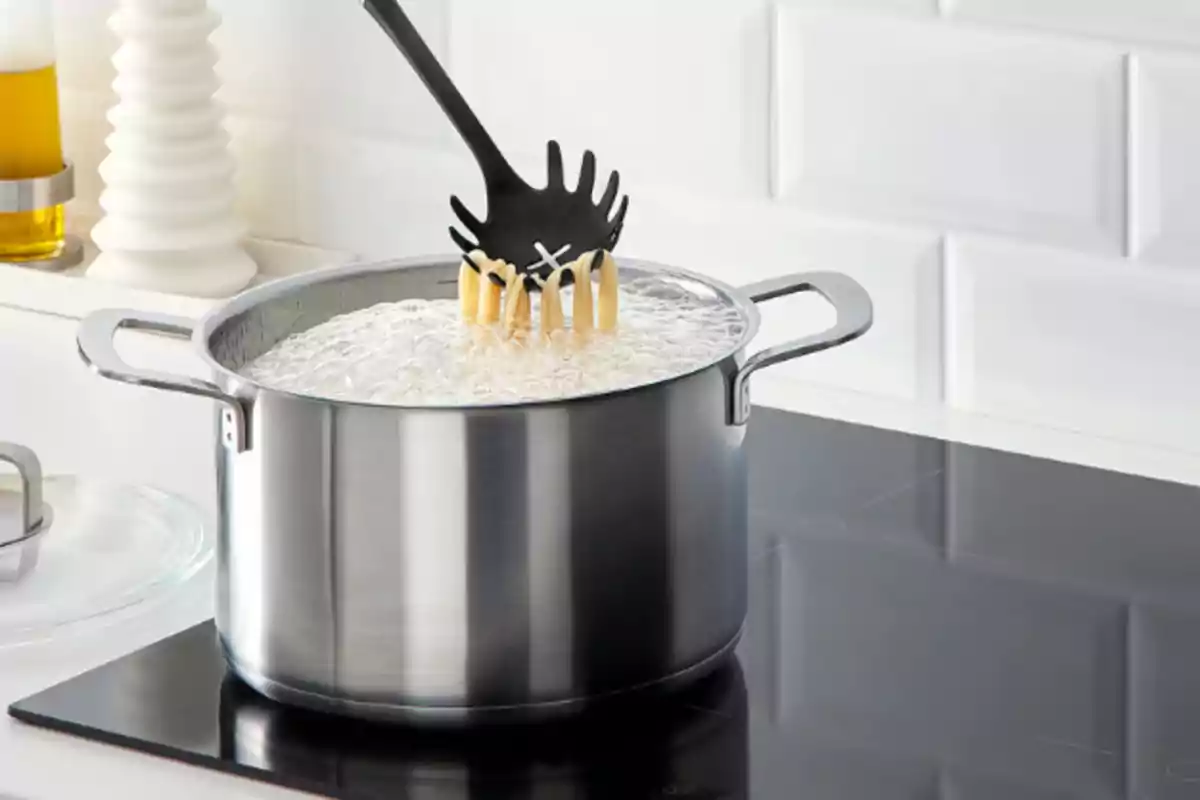Among all the kitchen utensils we use every day without thinking too much about it, there's one that holds a surprising secret. We're talking about the special pasta spoon, the one shaped like a toothed shovel with a large hole right in the center. What you might not know is that this seemingly insignificant detail can revolutionize the way you cook pasta.
The pasta spoon is designed to serve several purposes, and all of them make sense once you know them. On one hand, the toothed edges of the ladle are used to grab spaghetti or fettuccine when they're cooked, preventing them from slipping or getting too tangled. Thanks to that edge, it's much easier to take the pasta out of the water without having to use a giant colander or ending up splashing half the sink.

What is the hole in the pasta spoon for?
But the most curious and, at the same time, useful thing is what happens with the central hole. That seemingly decorative circle actually serves to measure the exact amount of raw spaghetti one person needs. This is how food science communicator Arthur Le Caisne explained it in his book Why Doesn't Spaghetti Bolognese Exist?.
The trick is simple: you just have to put raw spaghetti into the hole until it's completely filled, and you get a standard serving ready to cook. It's ideal for those who don't have a scale or tend to estimate "by eye" and end up with too much pasta. With a single spoon, you can measure about 3.5 oz. (100 g), the perfect amount for a person with an average appetite.

It's also very practical if you live alone or usually cook for one. Simply insert the spaghetti into the hole, repeat the process according to the number of people, and make sure you don't go over or fall short. Although it's not an exact measurement to the millimeter, it serves as a reliable reference to avoid the classic mistake of preparing too much pasta "just in case."
Double function in a single utensil: an essential ally for the kitchen
The hole also serves an important function in draining. When you remove the spaghetti from the pot, that hole makes it easier for the excess water to fall out, acting as a small built-in colander. However, this function is only effective in spoons that have several openings or an elongated design with slots.
For this reason, not all models have this feature. Spoons that include multiple perforations are designed to make draining more efficient, while those with a single central hole focus mainly on measuring the amount of pasta.

In any case, whichever model you choose, the important thing is not to underestimate this very common tool. Far from being a simple accessory, the pasta spoon can help you improve your recipes, save time in the kitchen, and adjust quantities with precision. With a single gesture, you can avoid both waste and hunger, and that's already a lot.

